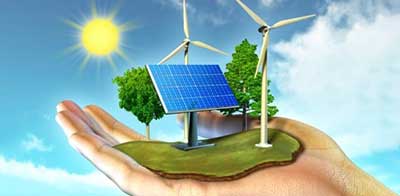Date: 06/03/2023
Relevance: GS-1/ GS-2: Government Policies and Interventions for Development in various sectors and Issues arising out of their Design and Implementation; Role of Women and Women’s Organization
Key Phrases: Clean energy-based livelihood technologies, distributed renewable energy (DRE), Council on Energy, Environment, and Water (CEEW), Enable policy convergence, Ministry of Micro, Small and Medium Enterprises.
Why in News?
- Clean energy-based livelihood technologies are transforming the lives of rural women in India.
- These technologies, such as solar refrigerators, biomass-based cold storage, and distributed renewable energy (DRE)-powered machinery, provide an additional advantage to women farmers and micro-entrepreneurs by enhancing income opportunities through mechanization.
- However, to scale up the impact of these technologies, key steps must be taken to reach rural women and empower them.
Distributed Renewable Energy
- DRE refers to decentralized and localized energy systems that generate electricity from renewable energy sources such as solar, wind, biomass, or hydropower.
- These systems are typically small-scale and designed to provide electricity to remote and rural areas that are not connected to the main grid or where grid electricity is unreliable or inadequate.
- DRE systems can be standalone or interconnected, and they often use energy storage technologies to ensure a stable and reliable power supply.
- DRE technologies have the potential to transform rural livelihoods and reduce energy poverty while mitigating the negative environmental impacts of conventional fossil fuel-based energy systems.
Draft Policy Framework for Distributed Renewable Energy
- In February 2022 the Union Ministry of New and Renewable Energy (MNRE) released a draft policy framework for DRE livelihood applications.
- The objective of this framework is to develop an enabling market ecosystem to ensure widespread adoption of DRE for sustainable livelihood creation in the country.
Women as early adopters of clean-tech livelihood:
- CEEW Study Results:
- A recent Council on Energy, Environment, and Water (CEEW) study has shown that out of the 13,000 early adopters of clean tech livelihood appliances, more than 80% are women.
- Advantages of DRE-powered technologies for Women:
- It provides an additional advantage to women farmers and micro-entrepreneurs by enhancing income opportunities through mechanization.
- They also free women from several gender-assigned manual activities that are laborious.
- Future Outlook for Women-owned MSMEs:
- By 2030, India is expected to see 30 million women-owned micro, small and medium enterprises (MSMEs) employing around 150 million people.
- Potential of DRE Livelihood Technologies:
- DRE livelihood technologies — a $50 billion market opportunity in India alone — have the potential to transform rural livelihoods, with women at the core of this transition.
Leveraging Early Adopters:
- DRE appliances are perceived as high-risk purchases, especially by women users with a relatively lower risk appetite due to socio-economic reasons.
- To overcome this challenge, technology providers must leverage early users to share their experiences with potential customers, becoming demo champions/sales agents to market these products based on their first-hand product experience and local credibility.
Organise Hyperlocal Events and Demos:
- People want to touch and see a high-tech, high-ticket-size product before believing in its ability and promised benefits, especially when it comes to women who historically have limited access to new information.
- Hyperlocal events and demos create spaces for women to network, become aware of the product, and connect with people who can help them procure, finance, and use these machines.
- At an event in Hamirpur, Uttar Pradesh, more than 200 women booked seven appliances on the spot, including solar sewing machines and multi-purpose food processors.
Enabling Easy Finance to Purchase Products:
- Limited avenues to avail financing for these clean technology products remain a bottleneck.
- Financiers supporting women farmers and microentrepreneurs should consider the technologies themselves as collaterals while easing the loan application process.
- For example, Samunnati Finance, a financier in the agri-value chain, availed an 80% first-loan default guarantee to support six women-led FPOs in Andhra Pradesh that purchased 100-kg solar dryers.
- Technology manufacturers and promoters should also ensure adequate after-sales services and buy-backs.
- To build financiers’ confidence, evidence on the economic viability of these technologies should be shared and promoters must offer partial default guarantees.
Support Backwards and Forward Market Linkages:
- Many rural products have larger market potential, thus finding and connecting producers to consumption hubs in urban areas are equally important to generate higher incomes.
- Women often struggle with established market linkages because of limited mobility and networks outside their villages.
- Here, collectivizing women or establishing business models that enable them to sell to an intermediary can ensure a regular revenue stream.
- Reshamsutra, a manufacturer of solar silk-reeling machines, is partnering with local procurement organizations to establish silk cocoon banks and equipment training for women reelers in Chhattisgarh.
Enable policy convergence:
- No private sector entity has the kind of reach and scale government institutions have, so leveraging their reach is imperative to exponentially scale up.
- Multiple Ministries are working towards promoting livelihoods for women - from State rural livelihood missions, horticulture and agriculture departments, Ministry of Micro, Small and Medium Enterprises, to the Ministry of Textiles.
- They should embrace clean energy solutions to further their respective programs and outcomes.
Conclusion:
- Scaling the impact of clean energy solutions on women's livelihoods needs a village of policymakers, investors, financiers, technology promoters, and other ecosystem enablers.
- By leveraging the experience of early women adopters, organizing hyperlocal events and demos, enabling easy finance to purchase products, supporting backward and forward market linkages, and enabling policy convergence, we can truly unlock the potential of rural women and clean technologies simultaneously.
- Clean tech is the next big thing in rural India, and empowering women through these technologies will transform their livelihoods.
Source: The Hindu
Mains Question:
Q. How can the adoption of distributed renewable energy (DRE) technologies help in transforming rural livelihoods with a focus on women's empowerment in India, and what steps can be taken to scale up their impact from thousands to millions of women?







